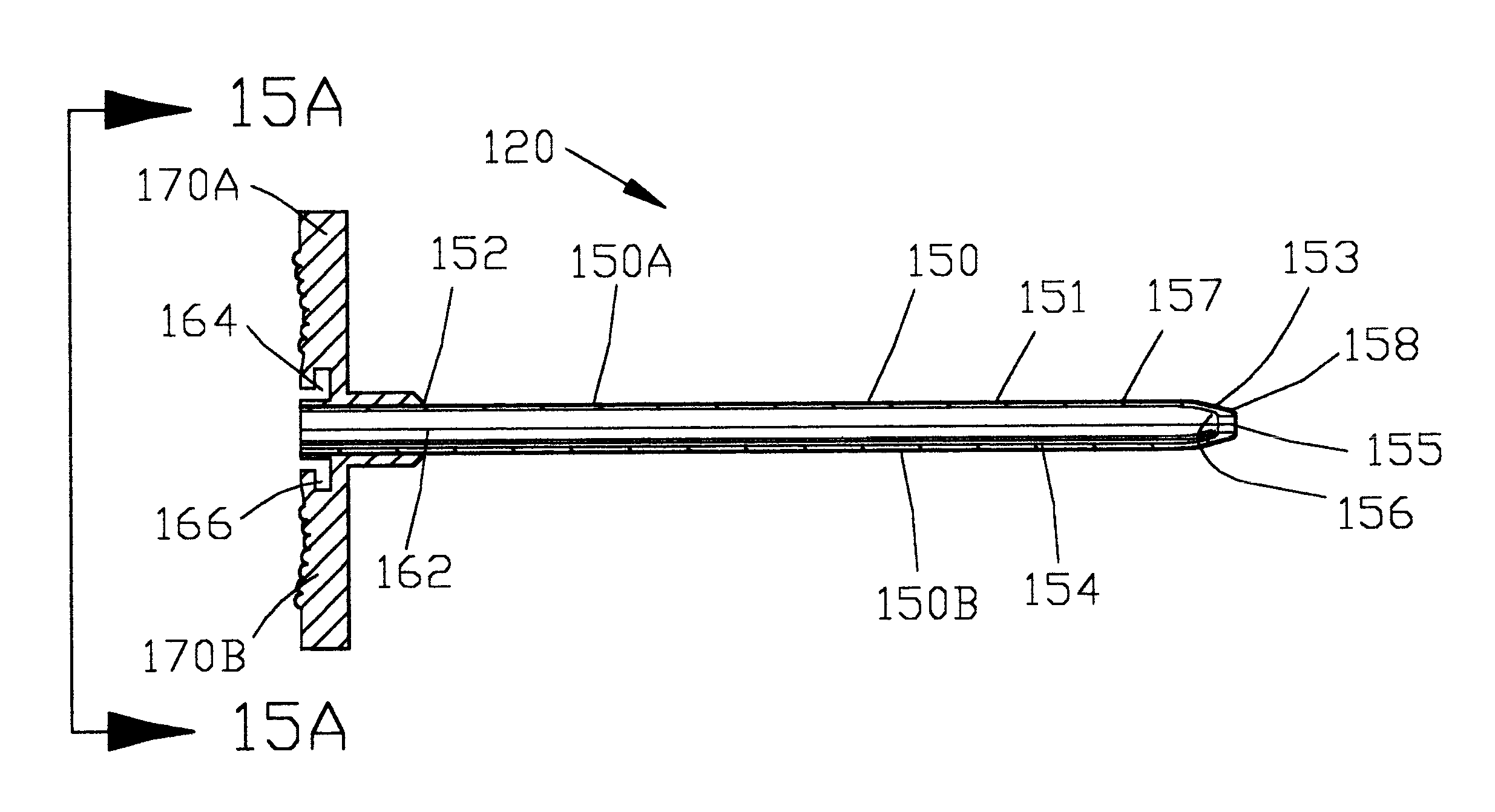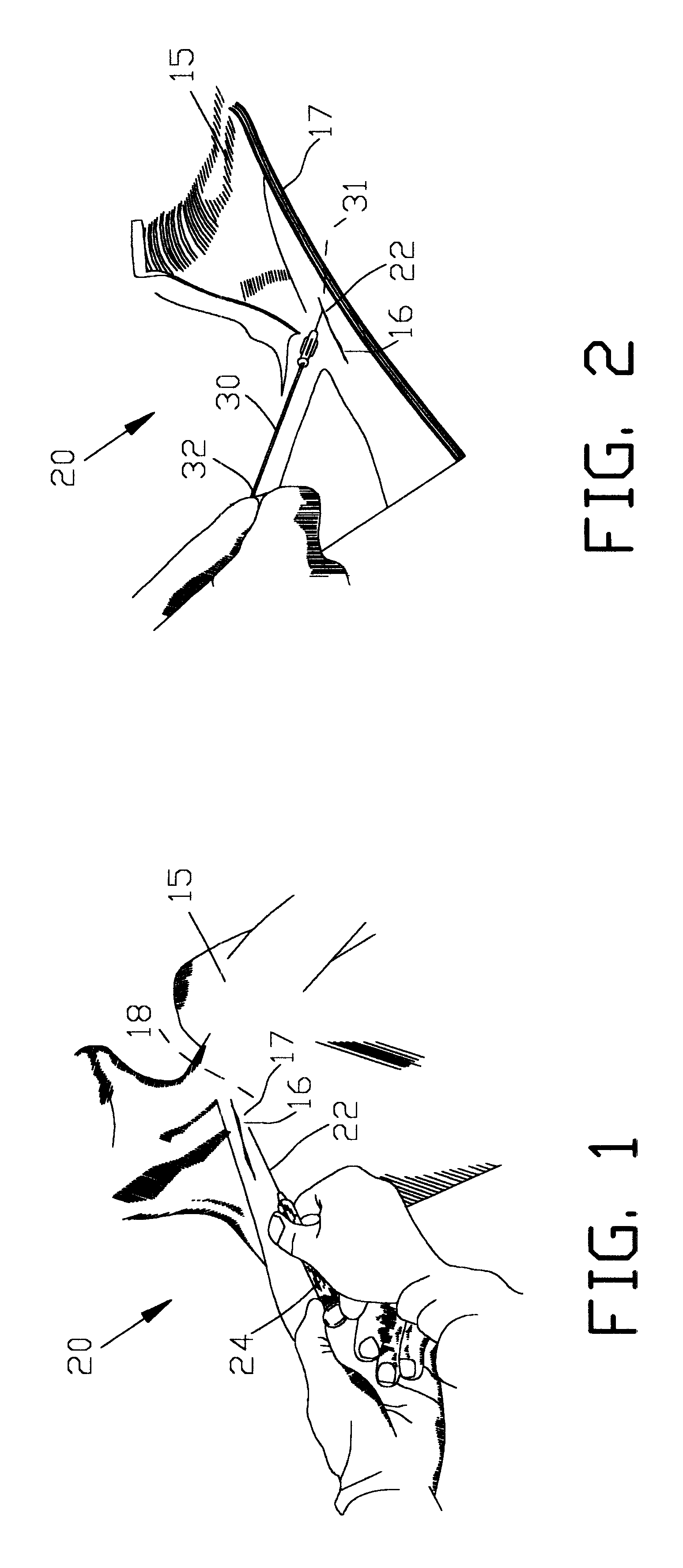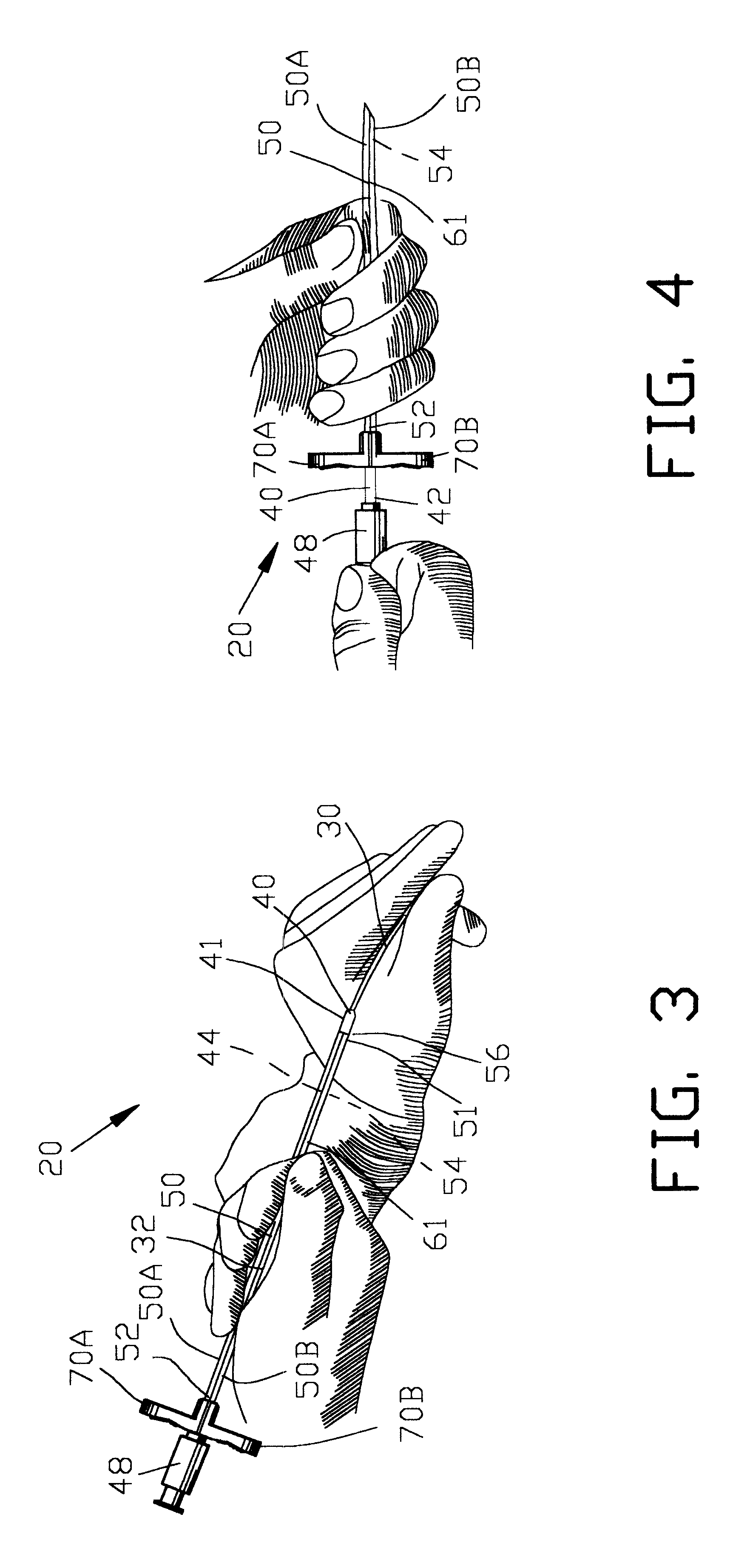Apparatus for inserting medical device
a medical device and apparatus technology, applied in the field of medical devices, can solve the problems of undesirable trauma and tissue damage, poor compatibility of plastic resin forming the tube body with that of the linear body, and the combination of dilator and sheath suffered from certain inherent problems,
- Summary
- Abstract
- Description
- Claims
- Application Information
AI Technical Summary
Benefits of technology
Problems solved by technology
Method used
Image
Examples
second embodiment
FIGS. 29-33 illustrate various views of components comprising an improved introducer apparatus 220 of the present invention for introducing the medical appliance 10 into the patient 15 in a manner similar to. FIGS. 12-29.
FIG. 29 is a side sectional view of a second embodiment of an improved obturator 240 comprising a portion of a second embodiment of the improved introducer apparatus 220 of the present invention. The improved obturator 240 is similar to the improved obturator 140. The obturator 240 extends between a distal obturator end 241 and proximal obturator end 242 with an internal passage 244 extending therebetween. The distal obturator end 241 of the obturator 240 has an external obturator taper 246 terminating from an external surface 247. The internal passage 244 of the obturator 240 is adapted to receive the flexible guide wire 30 shown in FIGS. 2-4. The proximal obturator end 242 of the obturator 240 supports an obturator hub 248. The hub 248 is provided with hub threads...
third embodiment
FIG. 34 is a side sectional view of an improved introducer apparatus 320 of the present invention comprising an improved obturator 340 and an improved sheath 350 dilating the original incision 16. The improved introducer apparatus 320 of the present invention enables the insertion of the improved sheath 250 into the patient 15 without the use of a coupling.
The improved obturator 340 is similar to the improved obturator 240 of FIG. 29. The obturator 340 extends between a distal obturator end 341 and proximal obturator end 342 with an internal passage 344 extending therebetween. The distal obturator end 341 of the obturator 340 has an external obturator taper 346 terminating from an external surface 347. The internal passage 344 of the obturator 340 is adapted to receive the flexible guide wire 30 shown in FIGS. 2-4. The proximal obturator end 342 of the obturator 340 supports an obturator hub 348.
The improved sheath 350 is similar to the sheath 250 of FIG. 30. The improved sheath 350...
PUM
 Login to View More
Login to View More Abstract
Description
Claims
Application Information
 Login to View More
Login to View More - R&D
- Intellectual Property
- Life Sciences
- Materials
- Tech Scout
- Unparalleled Data Quality
- Higher Quality Content
- 60% Fewer Hallucinations
Browse by: Latest US Patents, China's latest patents, Technical Efficacy Thesaurus, Application Domain, Technology Topic, Popular Technical Reports.
© 2025 PatSnap. All rights reserved.Legal|Privacy policy|Modern Slavery Act Transparency Statement|Sitemap|About US| Contact US: help@patsnap.com



